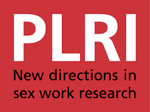There are many complex and intersecting causes of human trafficking. These “push” and “pull” factors have been described at great length in the literature, although quantitative and qualitative evidence is often lacking. The identified “causes” of human trafficking span gender inequality, social and political unrest, media images of wealth, transition, conflict, weak regulation, the existence of a market for sexual services and real or perceived job availability abroad (Demir & Finckenauer, 2010: 83; Kelly, 2005: 241; Kligman & Limoncelli, 2005: 125–126; Zimmerman, 2007: 147).
While I acknowledge these multiple factors, this article focuses primarily on the relationship between women’s ability to access domestic labour markets and
irregular migration. I undertake this analysis through a case
study of trafficking from Ukraine. My primary purpose is to explore barriers to the domestic labour market as a cause of
human trafficking and the extent to which a relationship exists between the two.
Human trafficking is frequently framed as the result of involuntary movement by victims, with stories of women who are lured or kidnapped against their will. Trafficking is
viewed as something that happens towomen, as opposed to exploitation experienced by women who make a concerted and legitimate attempt to change their lives. In this regard, attention is often focussed on the figure of the young naivewomanwho is unwillingly and sometimes unknowingly sold by her family or husband into sex work (see the story of Nepalese girl Chamoli described by Balos, 2004: 137).
In contrast to this framework, I argue that voluntariness is
inherent in many trafficking situations (see further, Vijeyarasa, 2010e: 217). As research increasingly demonstrates (for example Banerjee, 2006: 192–193; Chapkis, 2003: 931–932), modern-day trafficking frequently involves the economic migrant, who may even know that the tourist visa on which he or she travels has been obtainedwithout disclosure of the intention to work in the destination country. A significant number of
victims of trafficking, therefore, do consent to their initial entry into a situation that involves unexpected exploitative or coercive conditions of work.
Theme:
Author:
Ramona Vijeyarasa

